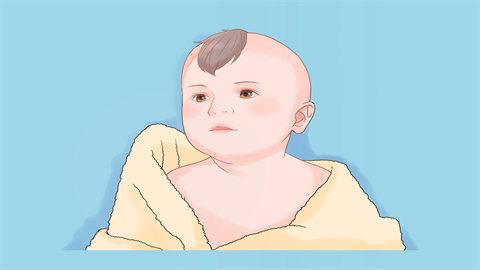Why does an 18-month-old baby have cold hands and feet when running a fever?
Generally speaking, fever refers to an elevated body temperature. When a one-and-a-half-year-old child experiences cold hands and feet during a fever, it may be related to body temperature regulation mechanisms, heat dissipation responses, upper respiratory tract infections, acute gastroenteritis, pneumonia, or other causes. It is recommended to seek timely medical attention, identify the underlying cause, and receive appropriate treatment under the guidance of a qualified physician. A detailed explanation is as follows:

1. Temperature Regulation Mechanism
During the initial stage of fever, due to the function of the body's temperature-regulating center, blood flow is prioritized to vital organs such as the heart and brain when body temperature rises. This may lead to reduced circulation in the extremities, resulting in cold hands and feet. It is recommended to keep the child warm and avoid prolonged exposure to cold environments.
2. Heat Dissipation Response
When a child has a fever, the body transfers internal heat to the body surface to dissipate it, causing the surface temperature to rise. As one of the main areas for heat dissipation, the extremities may become cooler due to this process. It is recommended to promptly provide the child with adequate hydration to maintain water balance in the body, which helps with heat dissipation.
3. Upper Respiratory Tract Infection
Upper respiratory tract infections are usually caused by viral or bacterial infections. During such infections, pathogens invade the body, triggering an inflammatory response that elevates body temperature. At the same time, the inflammation affects blood circulation, leading to insufficient blood supply to the extremities. Common symptoms include coughing, runny nose, and sneezing. Treatment may include medications such as Compound Paracetamol and Amantadine Tablets, Isatidis Root Granules, and Oseltamivir Phosphate Capsules, as directed by a physician.
4. Acute Gastroenteritis
Acute gastroenteritis is commonly caused by bacterial, viral, or parasitic infections. During acute gastroenteritis, pathogens invade the gastrointestinal tract, triggering an inflammatory response that raises body temperature. Additionally, inflammation and diarrhea can lead to imbalances in body fluids and electrolytes, affecting circulation. Symptoms typically include diarrhea, vomiting, and abdominal pain. Treatment may include medications such as Enteritis安宁 Tablets, Compound Berberine Tablets, and Smectite Powder, as directed by a physician.
5. Pneumonia
Pneumonia is usually caused by infections such as bacteria, viruses, or mycoplasma. During pneumonia, pathogens invade the lungs, triggering an inflammatory response that increases body temperature. At the same time, the inflammation affects pulmonary blood circulation, causing insufficient blood supply to the extremities. Symptoms may also include coughing, sputum production, and difficulty breathing. Treatment may include medications such as Cefuroxime Axetil Tablets, Ambroxol Hydrochloride Oral Solution, and Amoxicillin and Clavulanate Potassium Tablets, as recommended by a doctor.
In daily life, encourage the child to maintain sufficient sleep and a balanced diet, engage in appropriate outdoor activities, enhance physical fitness, and improve resistance.




